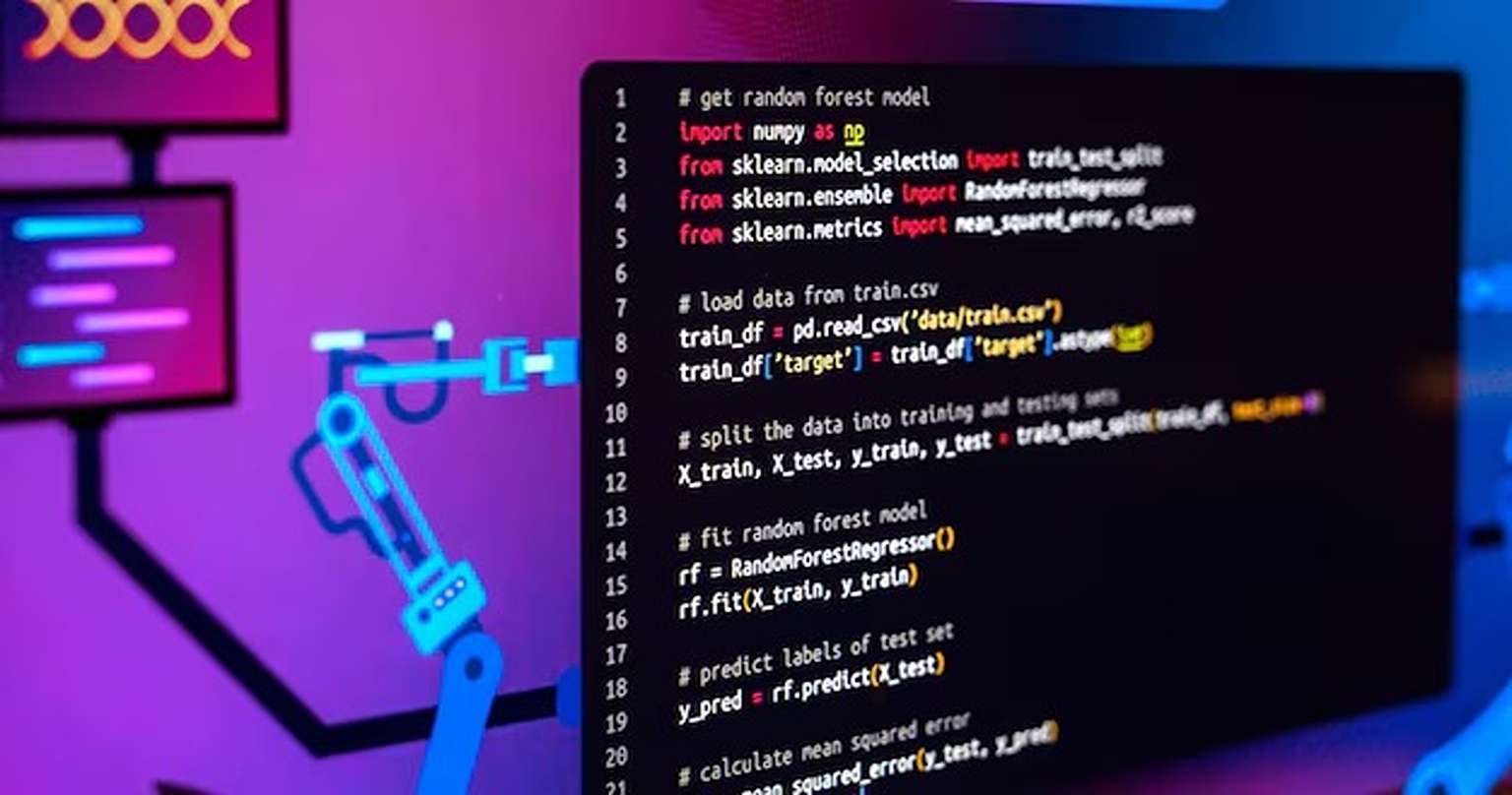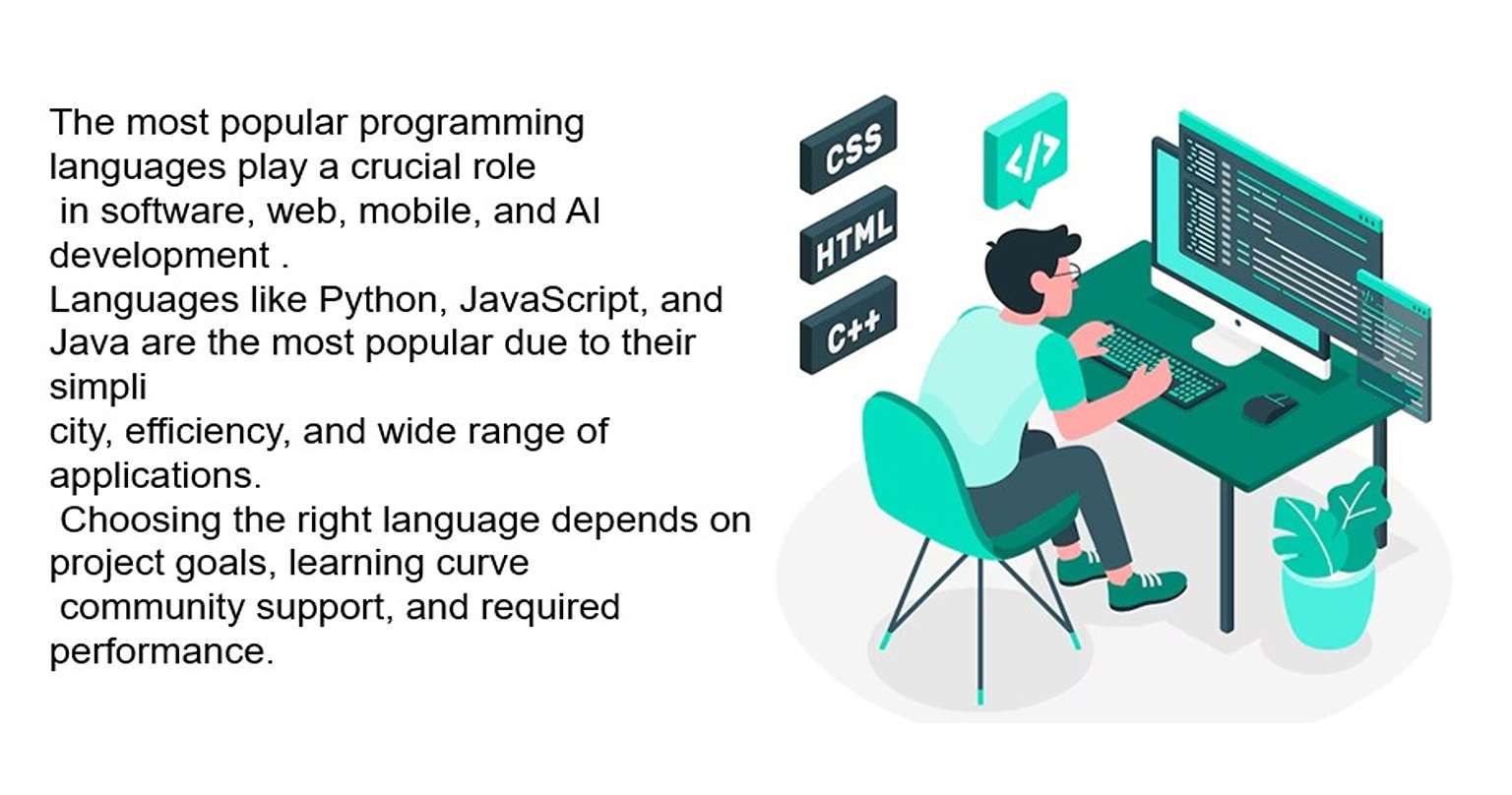In the ever-evolving world of technology, programming languages serve as the backbone of software development, enabling developers to create applications, websites, and systems that power our daily lives. With hundreds of programming languages available, some have gained prominence due to their versatility, ease of use, and widespread adoption across various industries. This article explores the most popular programming languages, their key features, applications, and the reasons behind their popularity among developers. Stay tuned to kubecodes until the end of the article.
What is a Programming Language?
A programming language is a formal system of commands, rules, and structures that allows developers to communicate with computers and give them instructions to perform specific tasks. These languages are used as tools to write software, programs, scripts, and other instructions that computers can execute.
Why Are Programming Languages Important?
Computers operate in machine language (zeros and ones), but writing code in machine language is difficult and time-consuming for humans. Programming languages act as an abstraction layer, allowing developers to write instructions in a more human-readable form. This code is then translated into machine language by compilers or interpreters so that the computer can execute it.
Types of Programming Languages
Programming languages are categorized into different types, each designed for specific purposes. Some of the main types include:
Low-Level Languages
- Close to machine language and offer more control over hardware.
- Example: Assembly language.
High-Level Languages
- Closer to human language and easier to learn and use.
- Example: Python, Java, C#.

Scripting Languages
- Used for automating tasks and rapid application development.
- Example: JavaScript, PHP, Python.
Object-Oriented Languages (OOP)
- Designed around object-oriented concepts like classes and objects.
- Example: Java, C#, Python.
Functional Languages
- Based on mathematical functions and computations.
- Example: Haskell, Lisp.
Domain-Specific Languages (DSL)
- Designed for specific applications.
- Example: SQL for database management.
Applications of Programming Languages
Programming languages are used in many fields, including:
- Web Development: Building websites and web applications (JavaScript, PHP, Python).
- Mobile Development: Creating mobile apps (Swift for iOS, Kotlin for Android).
- Artificial Intelligence and Machine Learning: Developing AI models (Python, R).
- Game Development: Building computer games (C++, C# with Unity).
- Automation and Scripting: Automating repetitive tasks (Python, Bash).
- Systems Programming: Developing operating systems and drivers (C, C++).
How to Choose a Programming Language?
Choosing a programming language depends on the following factors:
- Project Goals: Each language is suited for specific applications.
- Ease of Learning: Some languages are easier for beginners (e.g., Python).
- Community and Support: Languages with larger communities have more learning resources.
- Performance and Efficiency: Some languages are better for high-performance applications (e.g., C++).
The Most Popular Programming Languages
In the tech world, some programming languages are more widely used than others due to their versatility, ease of use, and broad applications. Below is a list of the most popular programming languages in recent years:
1. Python
Python is undoubtedly the most popular programming language today, known for its simplicity and readability. Its versatility has made it a go-to language for a wide range of fields, including web development, data science, and artificial intelligence.
Key Features
- Simple syntax, making it ideal for beginners.
- Libraries and frameworks for web development (Django, Flask) and machine learning (TensorFlow).
- Cross-platform compatibility.
Applications
- Web development (Django, Flask).
- Data analysis and visualization (Pandas, Matplotlib).
- Machine learning and AI (TensorFlow, PyTorch).
- Automation and scripting.
Reasons for Popularity
Python’s simplicity and flexibility have made it a favorite among both beginners and experienced developers. Its strong community support and continuous updates keep it relevant in emerging fields like AI and data science.
2. JavaScript
JavaScript is the foundation of web development, enabling the creation of interactive and dynamic content on websites. It is essential for front-end developers and is also used in back-end development through Node.js.
Key Features
- Runs in web browsers, making it essential for front-end development.
- Asynchronous programming capabilities.
- A vast ecosystem with frameworks like React, Angular, and Vue.js.
Applications
- Front-end web development (interactive user interfaces).
- Back-end development (Node.js).
- Mobile app development (React Native).
- Game development.
Reasons for Popularity
JavaScript’s dominance in web development is unmatched. Its ability to work across the entire stack (front-end, back-end, and mobile) makes it indispensable for modern developers.
3. Java
Java has been a cornerstone of programming for decades. Known for its “write once, run anywhere” philosophy, it is widely used in enterprise applications, Android development, and large-scale systems.
Key Features
- Platform independence due to the Java Virtual Machine (JVM).
- Strong object-oriented programming (OOP) principles.
- Robust security features.
Applications
- Enterprise software development.
- Android app development.
- Web applications (Spring framework).
- Big data technologies (Hadoop, Apache Spark).
Reasons for Popularity
Java’s reliability, scalability, and widespread use in enterprise environments have solidified its position as one of the most popular programming languages. Its strong community and long history ensure its continued relevance.
4. C#
C# (pronounced “C-sharp”) is a powerful programming language developed by Microsoft, used for building Windows applications and computer games. It is a key language in the .NET ecosystem.
Key Features
- Strong integration with the .NET framework.
- Object-oriented and component-based programming.
- Modern and adaptable syntax.
Applications
- Windows desktop applications.
- Game development (Unity engine).
- Web development (ASP.NET).
- Mobile app development (Xamarin).
Reasons for Popularity
C# is a go-to language for developers working in the Microsoft ecosystem. Its integration with Unity, one of the most popular game engines, has also made it a favorite among game developers.

5. C++
C++ is an extension of the C programming language and is known for its high performance and efficiency. It is widely used in systems programming, game development, and applications requiring high performance.
Key Features
- High performance and low-level memory manipulation.
- Object-oriented programming with procedural features.
- Extensive standard library.
Applications
- Game development (Unreal engine).
- Systems programming (operating systems, device drivers).
- Real-time simulations.
- High-performance applications (e.g., financial systems).
Reasons for Popularity
C++ remains popular due to its unparalleled performance and control over system resources. It is the language of choice for applications where speed and efficiency are critical.
6. PHP
PHP is a server-side scripting language widely used for web development. Despite competition from newer languages, it remains the foundation of many websites, including WordPress.
Key Features
- Easy to embed in HTML.
- Extensive database support (e.g., MySQL).
- Large community and extensive documentation.
Applications
- Web development (WordPress, Drupal).
- Content management systems (CMS).
- E-commerce platforms (Magento).
Reasons for Popularity
PHP’s simplicity and widespread use in web development, particularly for CMS platforms like WordPress, have kept it relevant.
7. Swift
Swift is a modern programming language developed by Apple for building iOS and macOS applications. Its high performance and ease of use are key reasons for its popularity.
Key Features
- Designed for safety and performance.
- Modern syntax with features like optionals and type inference.
- Seamless integration with Apple’s ecosystem.
Applications
- iOS and macOS app development.
- Mobile game development.
- Cross-platform development (with SwiftUI).
Reasons for Popularity
Swift’s focus on performance and safety, along with its modern syntax, has made it the top choice for Apple developers.
8. Go (Golang)
Go, also known as Golang, is a statically typed language developed by Google. It is known for its simplicity, high performance, and built-in support for concurrency.
Key Features
- Fast compilation and execution.
- Built-in support for concurrent programming.
- Simple and easy-to-learn syntax.
Applications
- Cloud-based applications.
- Microservices architecture.
- DevOps tools and automation.
Reasons for Popularity
Go’s simplicity and performance make it ideal for modern cloud-based and distributed systems. Its growing adoption in the tech industry highlights its potential.
9. SQL
SQL (Structured Query Language) is a domain-specific language used for managing and manipulating relational databases. It is essential for data-driven applications.
Key Features
- Declarative syntax for querying databases.
- Standardized across database systems.
- Powerful data manipulation capabilities.
Applications
- Database management (MySQL, PostgreSQL).
- Data analysis and reporting.
- Back-end development for data-driven applications.
Reasons for Popularity
SQL’s importance in database management ensures its continued use in virtually every industry that relies on data.
10. Kotlin
Kotlin is a modern, statically typed programming language that runs on the Java Virtual Machine (JVM). It is officially supported for Android development and is gaining popularity due to its concise syntax.
Key Features
- Interoperability with Java.
- Concise and expressive syntax.
- Null safety features.

Applications
- Android app development.
- Back-end development (Ktor framework).
- Cross-platform development (Kotlin Multiplatform).
Reasons for Popularity
Kotlin’s modern features and seamless integration with Java have made it a favorite among Android developers.
Conclusion
The most popular programming languages each have their unique strengths and applications. Python’s versatility, JavaScript’s dominance in web development, and Java’s reliability in enterprise environments are just a few examples of why these languages are widely used. As technology continues to evolve, these languages adapt, maintaining their relevance in the ever-changing landscape of software development. Whether you’re a beginner or an experienced developer, learning one or more of these languages can open doors to countless opportunities in the tech industry.

